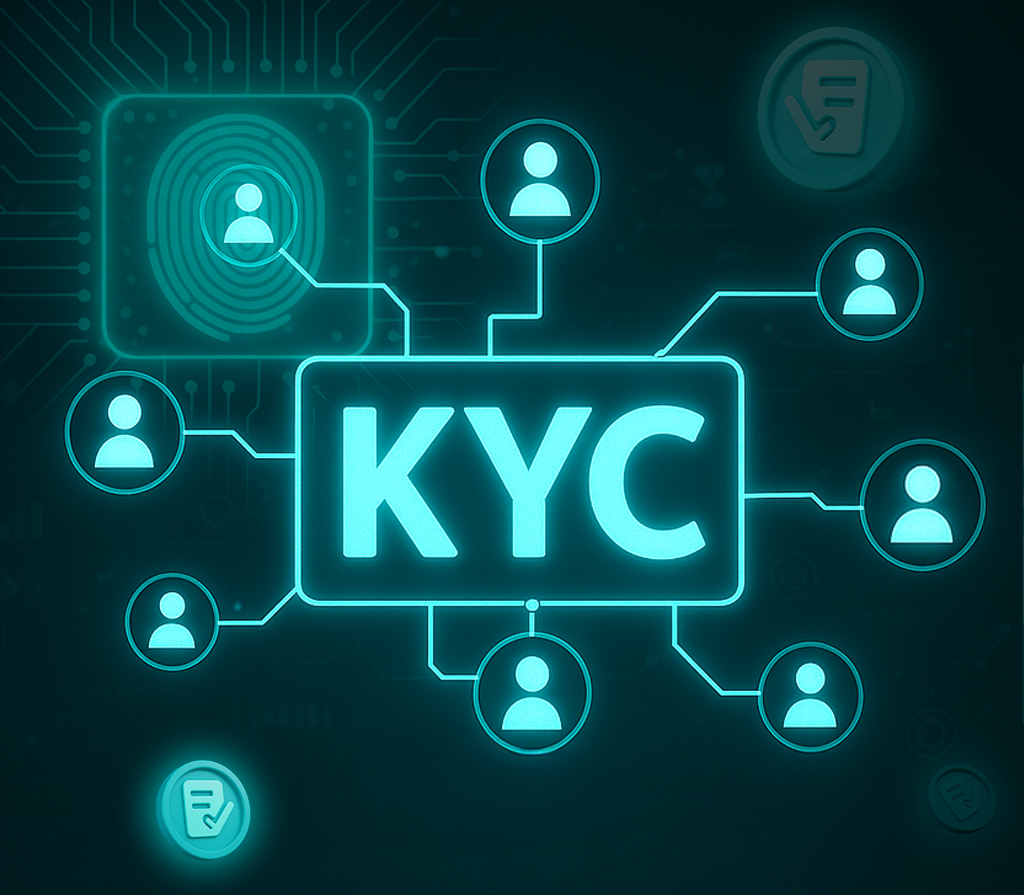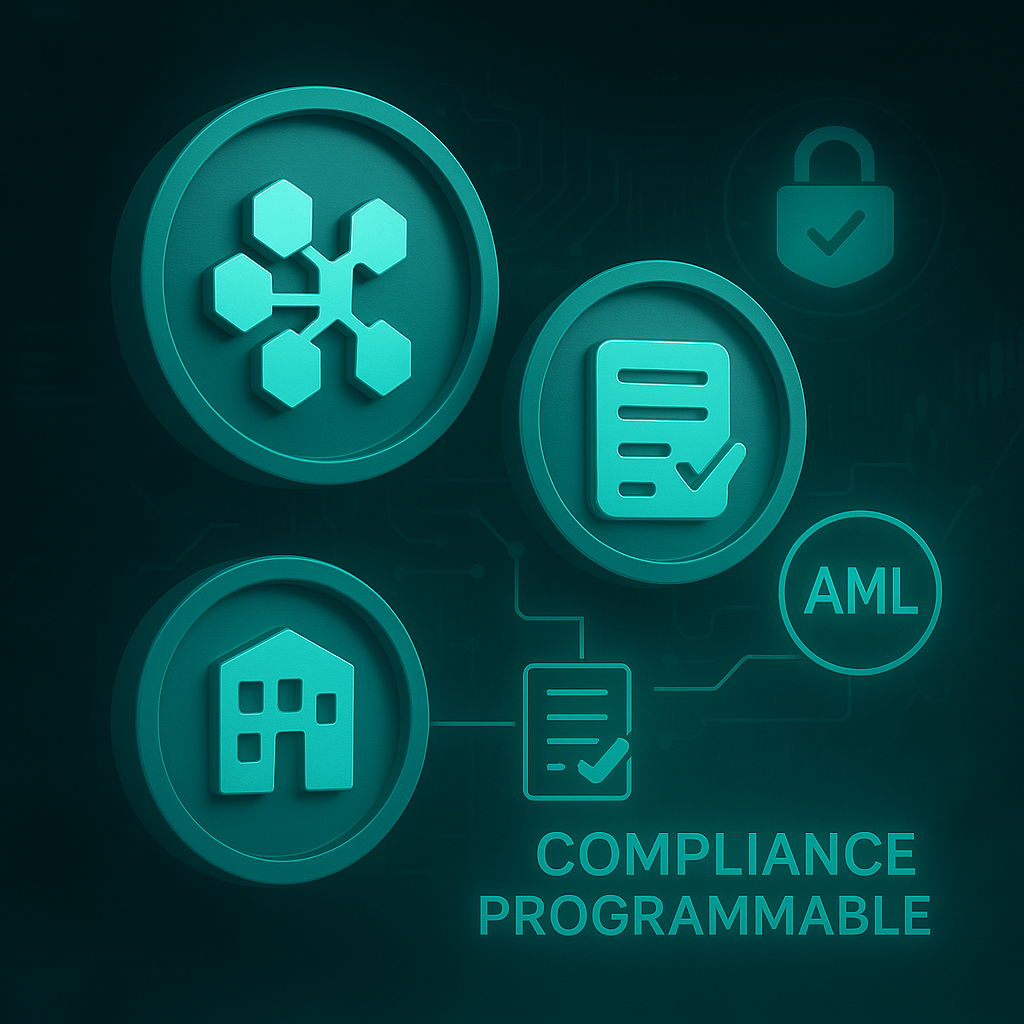RegTech: Regulation in the age of automation

The boundary between law, technology, and strategy has never been so thin.
As financial institutions adapt, compliance could well become a competitive advantage.
Reading time: 10 minutes
KYC, AML, GDPR… So many acronyms that financial players can no longer afford to ignore. Behind these initials lies a single imperative: compliance. It is at the heart of this regulatory complexity that RegTechs, startups specialized in regulatory technology, are beginning to pave the way.
From rules to code: The birth of a sector
Historically, banks and insurance companies have always had compliance functions. But the 2008 crisis reshuffled the deck: increased sanctions, stricter regulatory requirements, and greater pressure on institutions to prove their integrity.
It is in this context that RegTechs emerged: technology companies using artificial intelligence, machine learning, or blockchain to automate compliance processes. The goal? Reduce costs, minimize errors, and above all, respond more quickly to constantly evolving regulations.
Beyond financial institutions, other sectors are affected. Insurance companies, asset managers, and even large industrial firms must now deal with increasingly strict compliance obligations. RegTechs offer a cross-functional solution to a growing need: turning compliance into a strategic lever rather than a burden.
When AI replaces the auditor
RegTechs don’t just digitize human task: they reinvent them.
A striking example? KYC (Know Your Customer). Where an analyst once had to manually verify a customer’s identity, a RegTech solution can now cross-reference dozens of public and private databases in real time, detect inconsistencies, and even predict fraud risks using predictive models.
The same applies to Anti-Money Laundering (AML): alerts generated by RegTech systems are often more accurate than those of traditional tools, reducing false positives and facilitating internal investigations. This leads to a significant reduction in compliance overhead, which previously required entire dedicated teams.

Modular building blocks in financial infrastructure
RegTechs often operate with APIs (application programming interfaces) and tools that can be assembled like building blocks. Rather than replacing existing IT systems, they offer modular solutions—tools for verifying documents, analyzing risk, or monitoring transactions.
This model fits well with new forms of finance such as Web3 or Finance as a Service, where flexibility and easily adaptable systems are key. The rise of embedded finance—which integrates financial services into non-financial applications—further strengthens the need for simple, interoperable, and scalable interfaces.
RegTechs can easily integrate into payment platforms, neobanks, or enterprise resource planning (ERP) systems, making compliance invisible but always present.
The role of consulting: Between integration and strategy
The rise of RegTech has opened new opportunities for consulting firms, who now work at the crossroads of digital transformation and risk management. Their mission goes beyond offering tools: they help businesses understand complex rules and translate them into concrete, efficient solutions.
More importantly, consulting plays a key role as an interface between regulators, IT teams, and business units, ensuring compliance by design rather than by default. This integrated approach is especially crucial as regulations evolve rapidly, often across transnational legal frameworks (e.g., DORA, MiCA, FATF…).
Large enterprises increasingly turn to consultants to build regulatory risk maps and prioritize technological investments—to anticipate change rather than react to it.
Blockchain and compliance: Toward programmable transparency?
While AI is central to RegTech, blockchain brings another promise: total traceability. Imagine automated audits where every regulated operation is recorded on an immutable ledger. We’re talking about:
- Shared KYC via blockchain
- Smart contracts integrating AML rules
- Regulatory oracles: tools that automatically update a smart contract’s rules based on current laws
This is the idea behind programmable compliance: regulation embedded in code, executed automatically, and visible to all stakeholders.
Of course, these uses are still emerging and raise legal questions: who controls the code? Who validates it? But they mark a shift in the regulator’s role—from post-facto arbiter to real-time supervisor.
The prospect of public or private blockchains with built-in regulatory modules could ultimately redefine the balance between innovation and oversight.

Tools, not judges
One crucial point: RegTechs do not replace regulators. They support them. Their role is to provide transparency, traceability, and automation tools—not to issue laws or sanctions.
Some platforms are already testing ways to integrate rules directly into smart contract code from the outset. This is a promising idea, especially in decentralized finance (DeFi), but still rare. It requires stronger dialogue between developers, legal experts, and public authorities.
In this respect, public-private cooperation will be critical to building a mature, reliable, and fair RegTech ecosystem. Too rigid a regulation could stifle innovation; too little structure would create new systemic risks.
Would you like me to continue with the “Use Cases” section in this format?
Use Cases: RegTech at the Service of Web3 Projects
Structuring Tokenized Assets
Asset tokenization opens the door to a new generation of financing and value exchange. But it also raises major compliance questions, especially when it comes to structuring a secondary market. Who can buy? Under what conditions? How are exchanges tracked?
RegTechs offer a clear answer. By automating rule integration (MiCA, AML, prospectus, KYC…), they make it possible to build tokenized ecosystems that are reliable and scalable. This applies as much to issuance as to resale. In a “compliance by design” logic, they ensure that each stage of a token’s lifecycle complies with a clear regulatory framework—without complicating the user experience.
Supporting Fundraising
Raising funds through tokens or digital vehicles requires more than a good pitch: it involves building a solid, understandable, and compliant project from the outset. Legal structuring, document drafting, AML/KYC compliance, and the creation of an “investor-ready” environment—every step matters.
This is where RegTechs can play a key role. By combining strategic consulting and operational tools, they help project leaders secure their fundraising—whether private, public, or tokenized—while ensuring smooth compliance that doesn’t hinder momentum.
Managing Compliance in Decentralized Finance
DeFi protocols face a dual challenge: maintaining a decentralized logic while meeting increasing regulatory requirements. RegTechs can integrate automated verification mechanisms (KYC/AML), portfolio scoring, and alerts for suspicious transactions—without compromising the structure of the protocol.
Building Modular Infrastructures for Institutions and Fintechs
Banks, neobanks, and Web3 platforms are all looking to integrate compliance components without overhauling their entire architecture. RegTech solutions allow modules to be integrated via API—from identity verification to regulatory reporting—quickly and securely.
Generic Use Case Summary Table
| Use Case | Main Objective | RegTech Solutions Employed |
|---|---|---|
| Tokenized Asset Structuring | Ensure full compliance of a tokenized project throughout its lifecycle | Automated rule integration (MiCA, AML, KYC…), compliance by design |
| Fundraising Support | Legally and regulatorily structure a Web3 fundraising | Regulatory framing, AML/KYC tools, “investor-ready” documentation |
| Compliance in DeFi | Maintain compliance without undermining decentralization | Automated KYC/AML, portfolio scoring, suspicious activity alerts |
| Modular Infrastructure for Institutions & Fintechs | Add compliance components without system overhaul | API-ready modules: KYC, ID verification, regulatory reporting |
Real-World Examples: Addressing Complex Challenges in Digital Finance and Web3
Structuring a Security Token Offering (STO) for an Investment Fund
Objective: Enable a compliant fundraising through security tokens, in line with current regulatory requirements.
Solution: Full legal structuring, technical framework, documentation drafting, and coordination with institutional investors.
Examples: Specialized funds, alternative investment vehicles, tokenized real estate projects.
Integrating Blockchain into Private Banking Services
Objective: Modernize infrastructure without disrupting operations, while complying with European regulatory constraints.
Solution: Layer of blockchain for traceability and document authentication, with strategic and compliance support.
Examples: Private banks, family offices, digital safekeeping services, all document-intensive activities.
Regulatory Structuring of a Fundraising Round for a Web3 Startup
Objective: Secure a funding round while reassuring investors on the project’s legal and technical soundness.
Solution: Strategic support on AML/KYC compliance, investor document drafting, and alignment with VC expectations.
Examples: DeFi startups, blockchain-based logistics platforms, tokenized digital services.
Training a Law Firm on Tokenization and MiCA Framework
Objective: Strengthen legal support capabilities on digital asset projects.
Solution: Training sessions on MiCA regulation, token types, compliance challenges, and asset structuring on blockchain.
Examples: Business law firms, crypto practices, tax or corporate lawyers.
Tokenizing a Real Estate Asset for Fractional Sales
Objective: Enable investors to purchase shares of a real estate asset without going through traditional notarial channels, with automated redistribution of returns.
Solution: Tokenization via smart contracts, automated financial flow management (rents, dividends), investor-side KYC integration.
Examples: Developers, co-investment platforms.
Optimizing a Supply Chain with Private Blockchain Infrastructure
Objective: Track the origin and transit of sensitive goods in real time (e.g., medical equipment, critical components, industrial parts).
Solution: Timestamped recording on private blockchain, smart contract-controlled data access, integrated GDPR compliance.
Automating an Incentive Program (Bonuses, Prizes, Dividends)
Objective: Streamline the distribution of rewards to franchisees, partners, or employees based on predefined criteria.
Solution: Smart contracts executing payments upon condition validation, with oracle verification or ERP integration.
Examples: Real estate networks, insurers, B2B loyalty programs.
Certifying Professional Training on Blockchain
Objective: Ensure the authenticity of diplomas and trace training paths in regulated industries.
Solution: On-chain registration of certifications via private blockchain, with public verification module for recruiters and partners.
Examples: Healthcare, legal, industry, cybersecurity, finance.
In Summary
Much like how FinTech has modernized banking, RegTech (regulatory technologies) are redefining how businesses approach compliance. With the help of consulting and emerging technologies like blockchain, they are initiating a new way of thinking about compliance: not as a constraint, but as infrastructure.
What if tomorrow, regulation became an on-chain function? The boundary between law, technology, and strategy has never been so thin. As financial institutions adapt, compliance could well become a competitive advantage. But only if you know how to code it.
Explore our full podcast on MiCA with our experts!
Want to learn more about the MiCA regulation and its impact on the crypto-asset market?
Watch our exclusive podcast with Harry Lars Ghillemyn, Attorney at the Court at Woud Law Firm, where we explore in depth the main challenges of this new regulation and the most effective compliance strategies

🎧 Watch our entire episode on YouTube : 🔗 Watch our podcast
Sources :
💬 Subscribe now to stay informed about the latest cryptocurrency regulations and Web3 trends!
🔗 Our social links